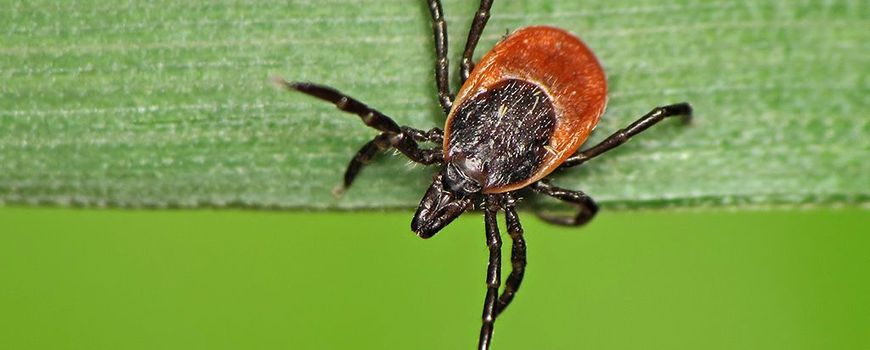The vast majority of people do not or barely get sick after a bite from a TBEV-infected tick. Of the people who get sick, 1-2 percent die. Within the European Union, the number of cases fluctuates between 2,500 and 3,500 per year, mainly in central and eastern Europe, the Baltic states and Scandinavia. Locally, however, there is great variation in the number of new cases of the disease. Ecological, socio-economic and cultural aspects play a role in this. Like the change in wildlife density and climate change, but also mushroom and berry picking, which is very popular in Eastern Europe. A typical feature of TBEV is therefore that its distribution is very fragmented, despite the main vector (the sheep tick Ixodes ricinus) and hosts (wood mice and voles) are widely distributed.
Earlier in the Netherlands than expected
The prevalence of TBEV has increased in recent years. The virus now occurs in areas where ecological conditions were previously thought to be unsuitable for virus transmission, such as the Netherlands. In 2015, infected ticks were found on the Sallandse Heuvelrug for the first time. These ticks were collected after a blood test of deer showed that some animals in this area had antibodies to TBEV. As these deer were already killed in 2010 but not tested until 2015, the virus has probably been circulating in the Netherlands for some time. Follow-up research on roe deer killed in 2017 showed the virus may have spread more widely since then. But since until then patients were only reported in the Utrecht and Sallandse Heuvelrug regions and the positive deer mainly came from the border regions, further research was needed.
Large-scale research
Between 2018 and 2020, Wageningen University & Research (WUR), in collaboration with RIVM and Artemis One Health, conducted large-scale surveillance research into the presence of TBEV in wild ticks and mice. In total, more than 46,000 ticks and 320 wild mice from 48 locations across the Netherlands were tested. The ticks were tested in groups, so-called “pools”. Of the tested tick pools (for a total of 3,086), 7 tested positive for TBEV-RNA in 3 locations: National Park Utrechtse Heuvelrug (municipality of Zeist), National Park de Sallandse Heuvelrug (municipality of Hellendoorn) and Roggebotzand Nature Reserve ( municipality of Dronten). This means that only 0.02% of the ticks studied were infected with the virus. In comparison: around 15% of Dutch ticks are infected with the bacteria Borrelia burgdorferi sl which causes Lyme disease. Of the tested mice (152 wood mice, 27 large wood mice, 39 red voles and 2 field mice), three animals tested positive for TBEV-RNA: two field mice from the Nature Park de Leemputten (municipality of Oost Gelre) and a red vole from the Rijk van Nijmegen (municipality of Nijmegen). ).
Different variants of viruses
Examination of the positive sign RNA showed that each region had its own viral variant. The Dronten variant was most closely related to one recently found in Germany. The Zeist variant was closely related to that of Sweden, and the Hellendoorn variant was closely related to that of England, where TBEV was first found in 2020. This suggests multiple independent introductions and confirms the notion that the TBEV can be spread over long distances, presumably through migratory birds. It’s also likely that the mice that tested positive are different variants of the virus.
Risk areas
The study confirms that TBEV occurs in more areas than just Utrechtse and Sallandse Heuvelrug. Combining the data with locations where patients have been reported previously and data collected from deer creates a more complete picture of risk areas in the Netherlands. In addition to the locations already mentioned, this concerns parts of Limburg, North Brabant and especially the east of Gelderland and Overijssel. While further spread of the virus is not inconceivable, the chance of being bitten by an infected tick and subsequently falling ill is very small. Currently, two to five patients in the Netherlands contract tick-borne encephalitis each year. An effective vaccine is available for people with high exposure to ticks.
More information
Text: Helen Esser and Sander Koenraadt, Wageningen University and Research in collaboration with it RIVM
photo: Robert Rozwalka, flickr (main photo: sheep mint, Ixodes ricinus)
